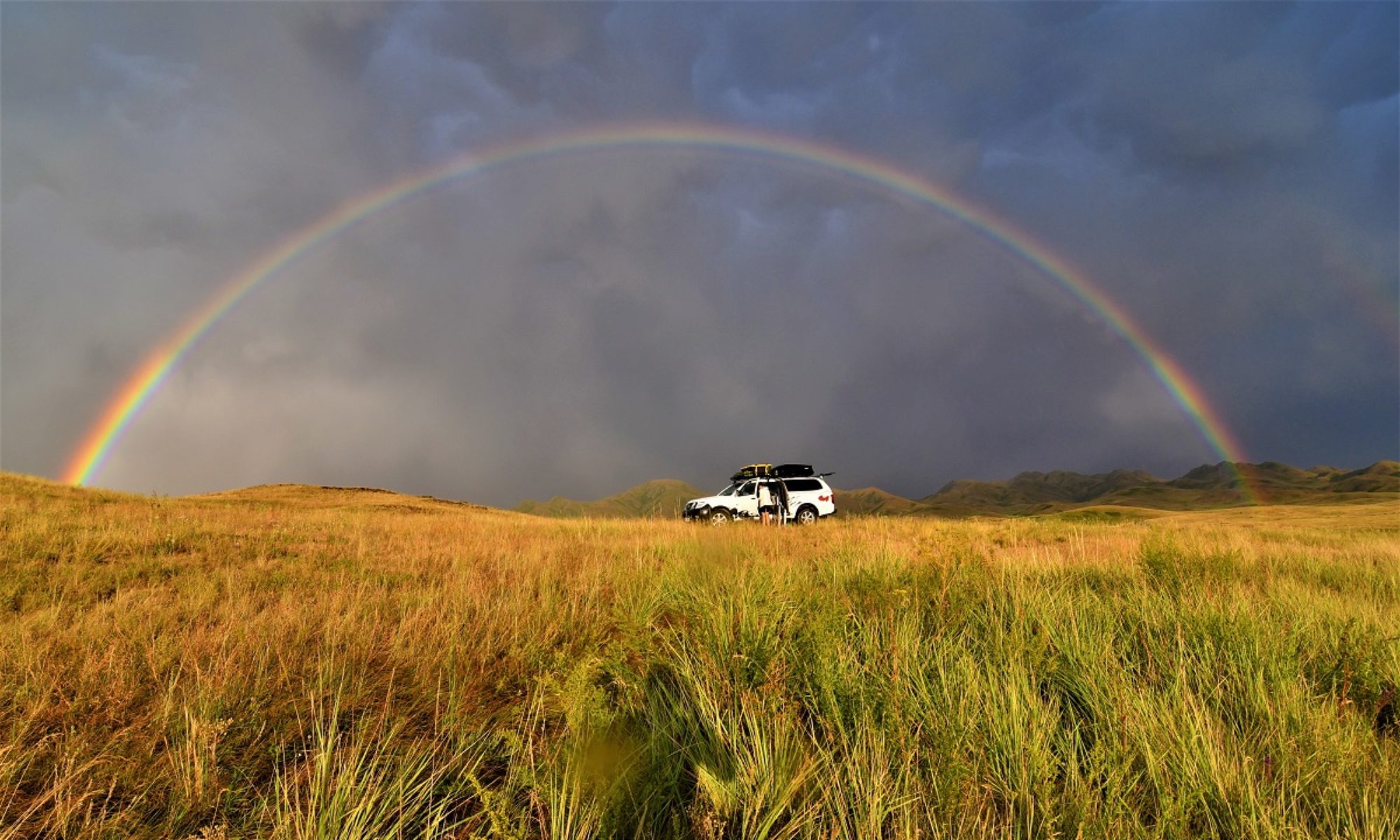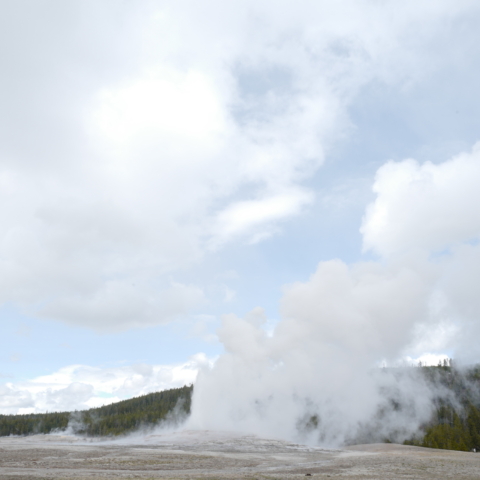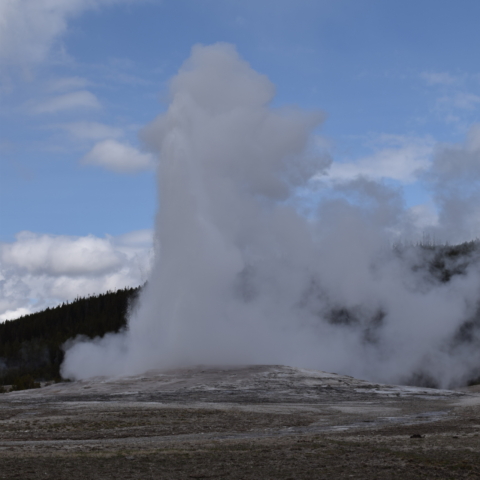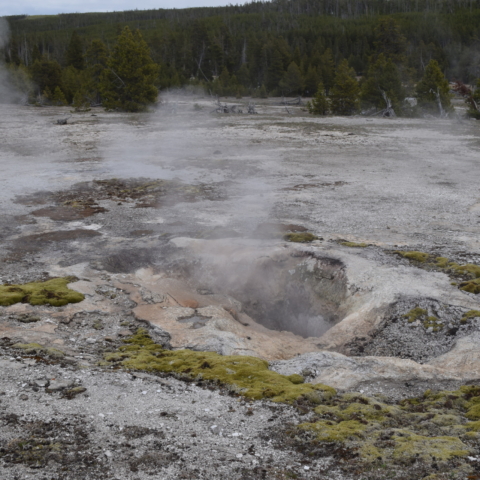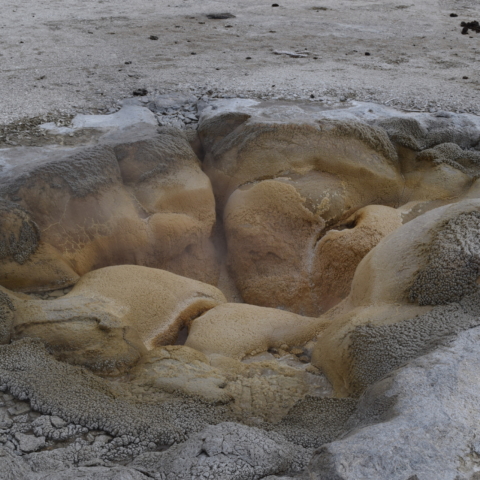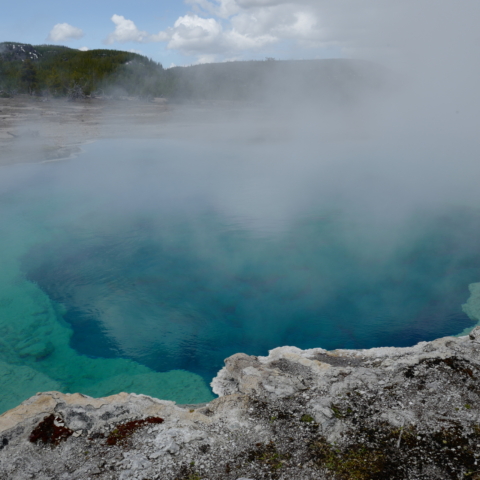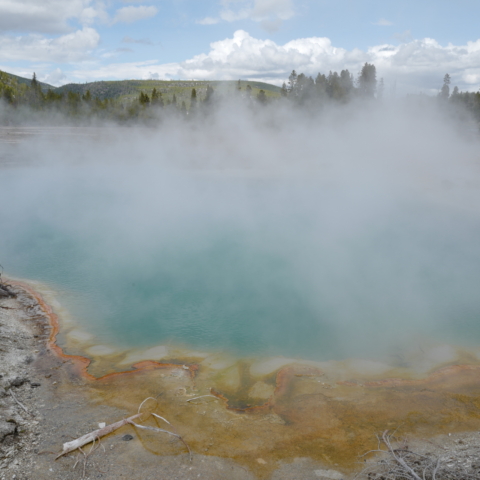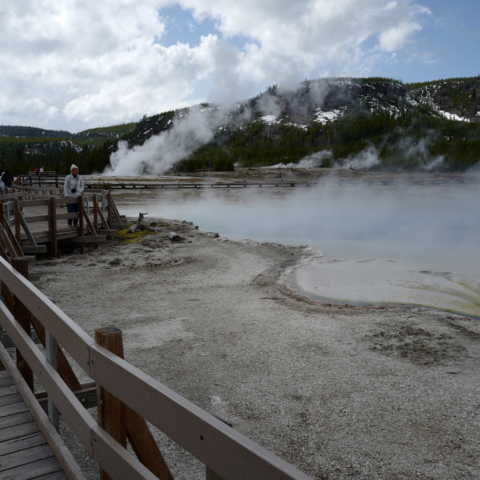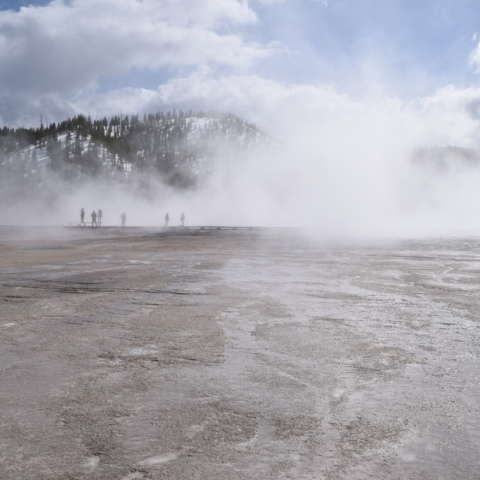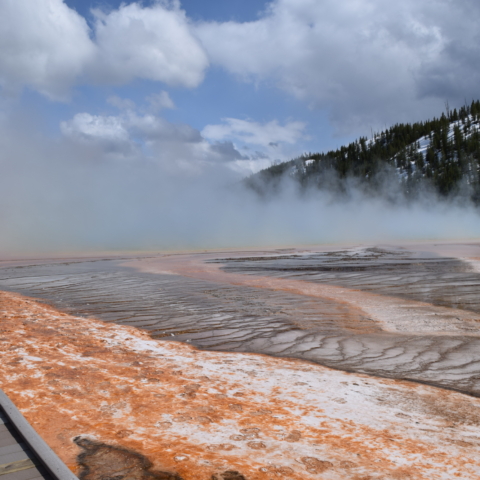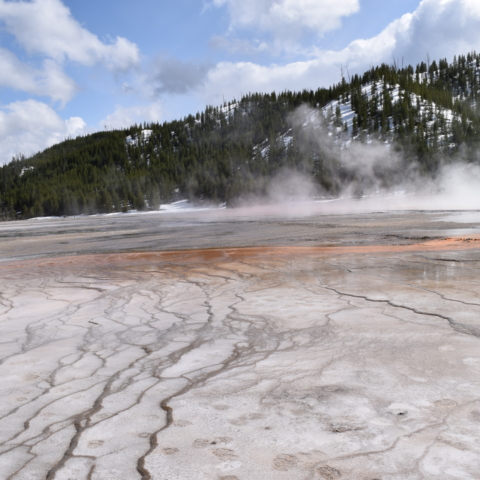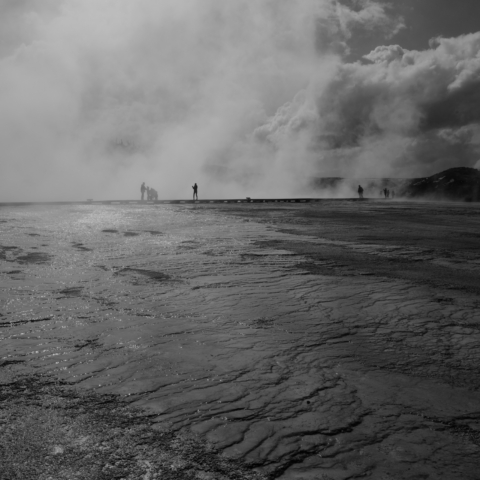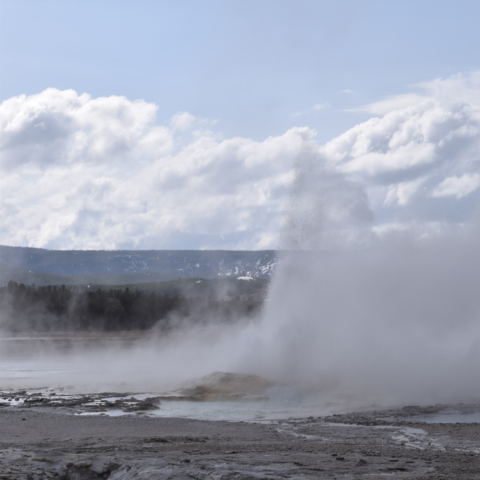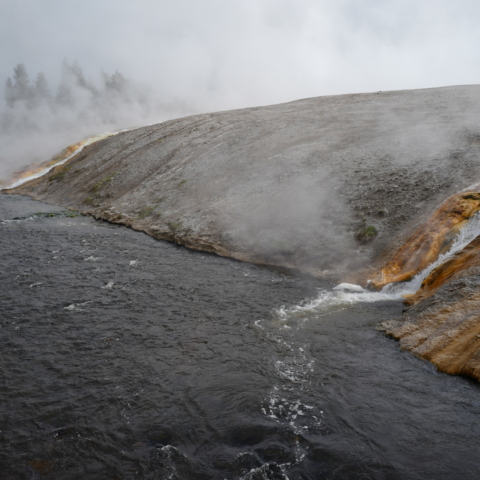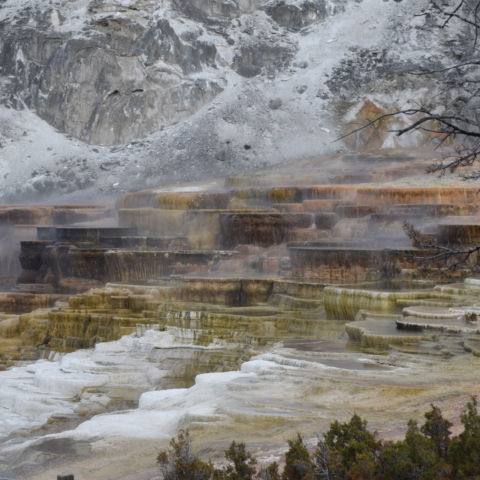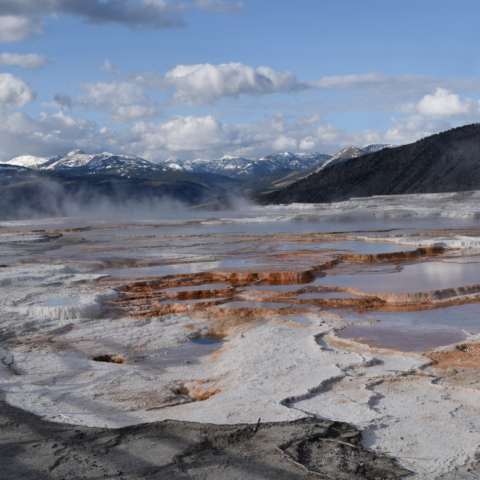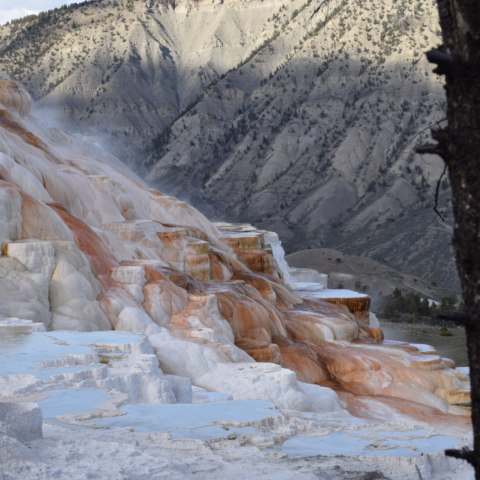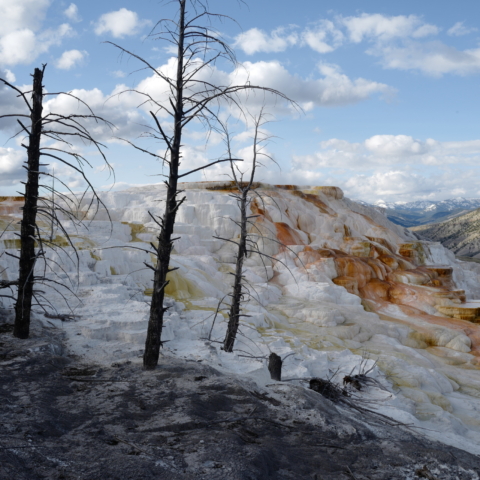May 7th, 2023
This is the way we had to take from Grand Teton NP due to the South entrance closure of Yellowstone NP on hwy 191.

Yellowstone became the first national park for all to enjoy the unique hydrothermal and geologic features on March 1, 1872 . Below is the commemorative entrance arch at the North Entrance.
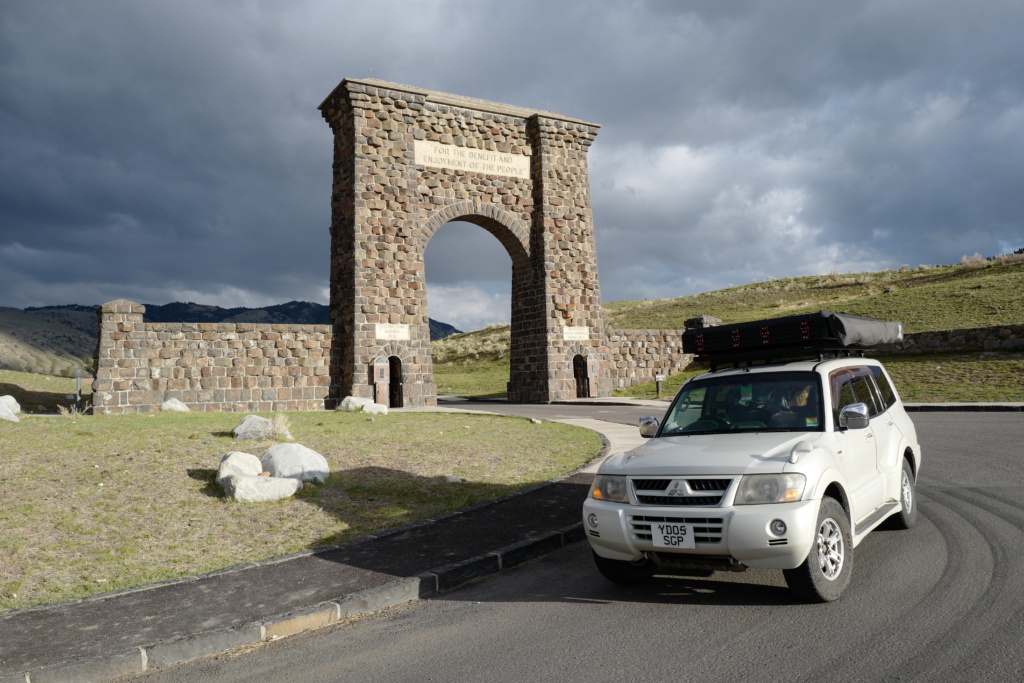
The Yellowstone NP features dramatic canyons, alpine rivers, lush forests, hot springs and gushing geysers, including its most famous, Old Faithful. It’s also home to hundreds of animal species, including bears, wolves, bison, elk and antelope.
We saw this bison and young one walking by the side of the road…
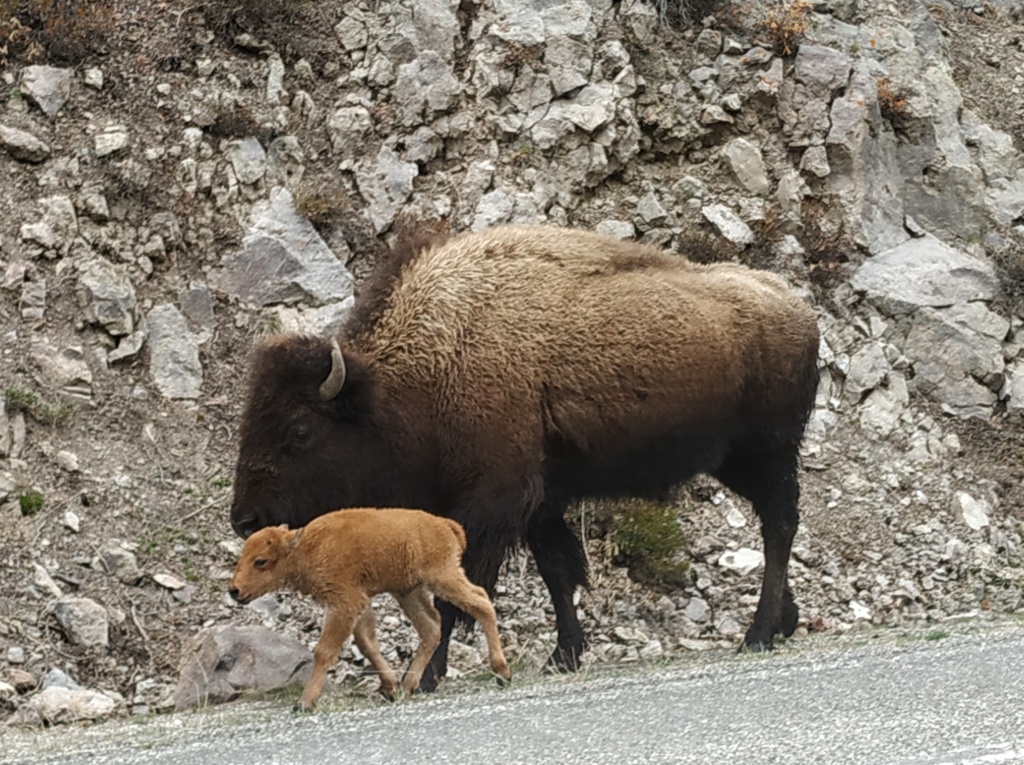
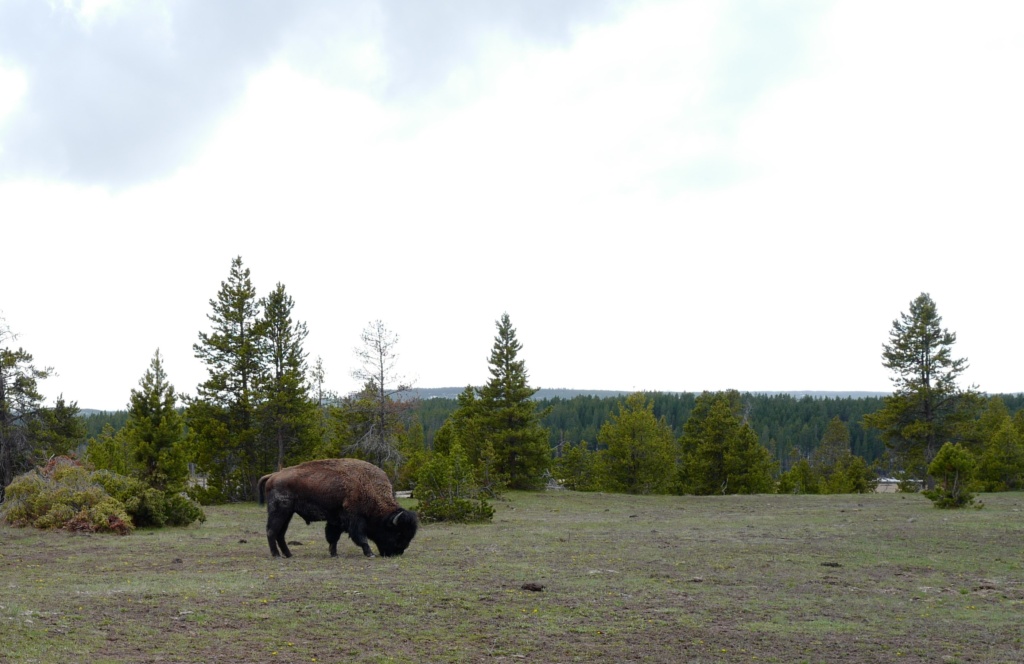
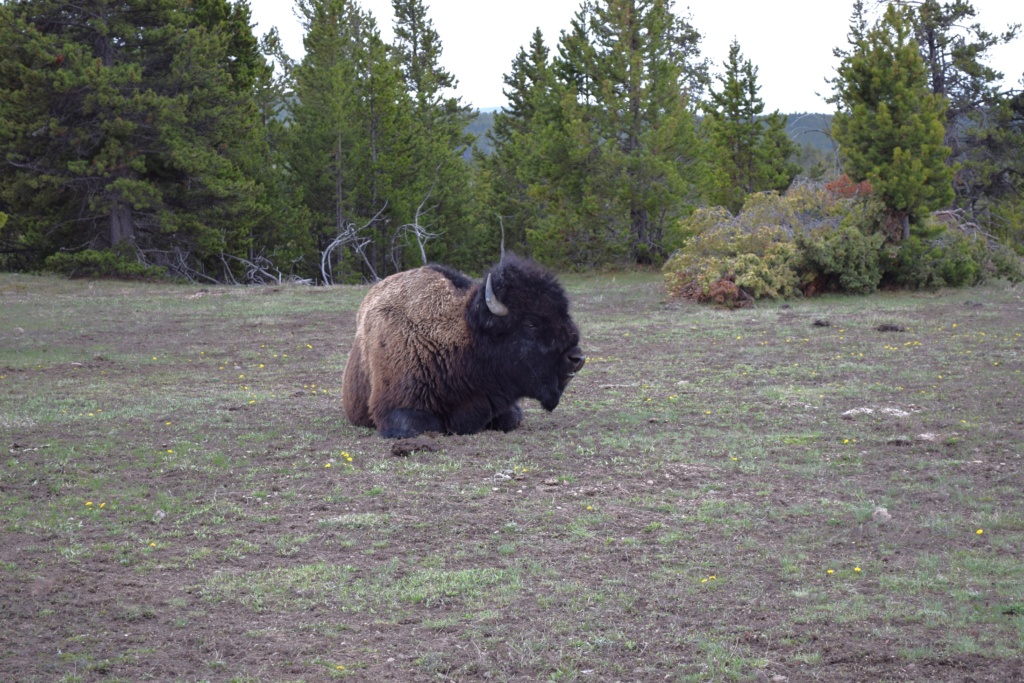
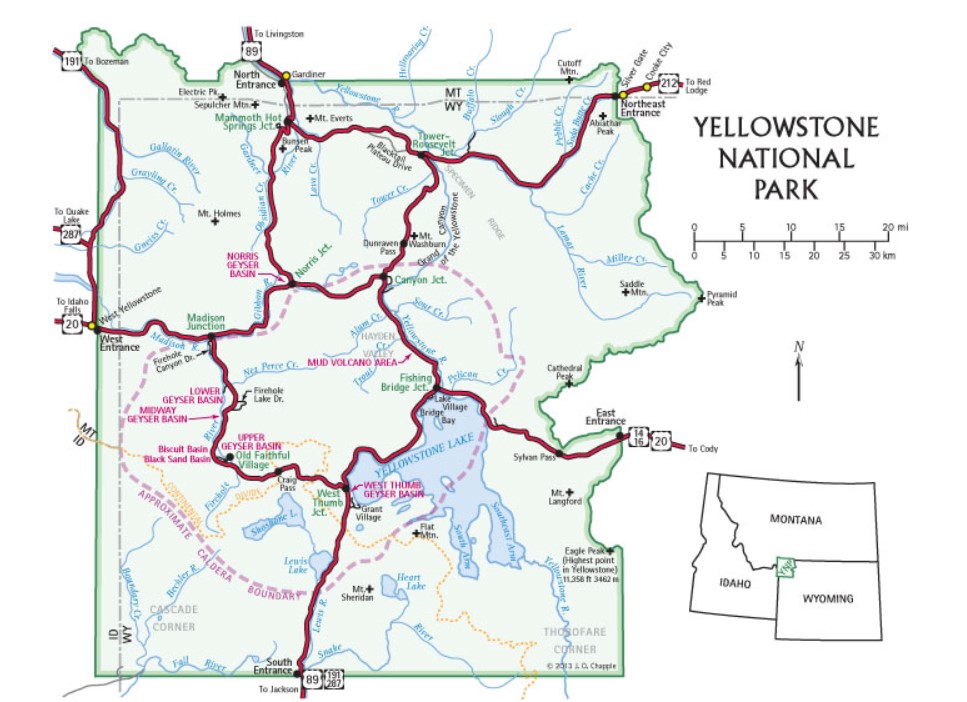
The park actually encompasses the site of a huge volcano which erupted several times. The most recent of these eruptions occurred about 639,000 years ago, creating what is now called the Yellowstone Caldera, which extends over an area of about 30 by 45 miles (48 by 72 kilometers). The approximate boundary of this caldera is shown as a pink dashed line on the map above. The volcano is still active , hence all the geysers and hot springs. Geologists warn us that this extremely hot area could erupt again…
Only half the roads were open due to snow conditions. We went straight to the visitor center and checked the predicted time of the Old Faithful Geyser. We did not have to wait long . A ranger gave a short talk explaining the workings of this cone geyser before we witnessed the geyser in action.
Old Faithful geyser
The ranger explained that the water coming out is around 150 years old… the time it takes for it to filter down the ground to the place where stone turns into magma (4.5 miles below ground) and then go up the chamber and up the spout. The spout is narrow, the size of a fist, and the pressure builds up until the water explodes out into a geyser.
An eruption lasts 1.5 to 5 minutes and expels 3,700–8,400 gallons (14,000–32,000 l) of boiling water, and reaches a height of 106–184 feet (30–55 m). Old Faithful Geyser has an average temperate of 169.7°F (76.5°C).
Yellowstone, as a whole, possesses close to 60 percent of the world’s geysers. The Upper Geyser Basin is home to the largest numbers of this fragile feature found in the park. Within one square mile there are at least 150 of these hydrothermal wonders. Of this remarkable number, only five major geysers are predicted regularly by the naturalist staff. They are Castle, Grand, Daisy, Riverside, and Old Faithful. There are many frequent, smaller geysers to be seen and marveled at in this basin as well as numerous hot springs and one recently developed mudpot.
Mud pot
Hot Springs Colors
Many of the bright colors found in Yellowstone’s hydrothermal basins come from thermophiles—microorganisms that thrive in hot temperatures (“thermo” for heat, “phile” for lover). So many individual microorganisms are grouped together—trillions!—that they appear as masses of color.
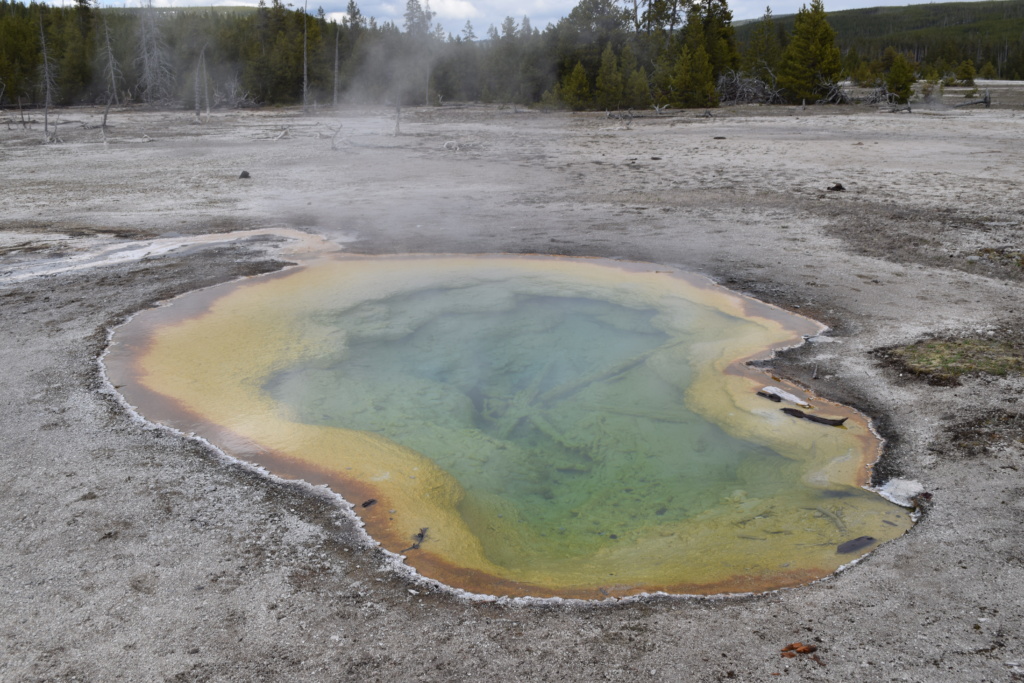
Different types of thermophiles live at different temperatures within a hot spring and cannot tolerate much cooler or warmer conditions. Yellowstone’s hot water systems often show distinct gradations of living, vibrant colors where the temperature limit of one group of microbes is reached, only to be replaced by a different set of thermophiles. ( extract from https://www.nps.gov/yell/learn/nature/hot-springs.htm).
We could not drive the whole scenic loop so we retrace our steps and stopped on the way at Biscuit Basin, Grand Prismatic Spring and Fountain Paintpot.
[Click on picture to open gallery]
We made our way to the North Entrance, stopping at Mammoth Hot Springs.
Mammoth Hot Springs are a must-see feature of Yellowstone National Park in part because they’re so different from other thermal areas in the area. This is largely because limestone is a relatively soft type of rock, allowing the travertine formations to grow much faster than other sinter formations.
The dissolved limestone solution coming through fissures in the ground looses its carbon dioxide content when exposed to the air and reforms into a solid mineral. This white, chalky mineral is deposited as the travertine that forms the terraces. (similar to the formations seen at Pamukkale in Turkey).
[Click on picture to open gallery]
